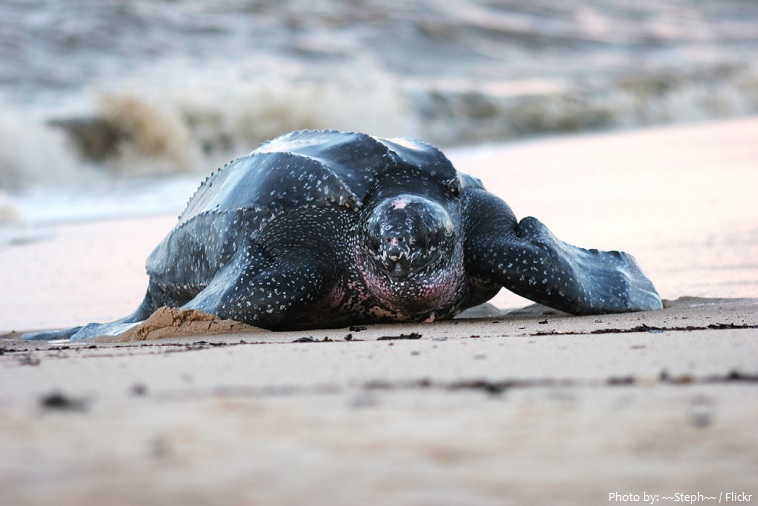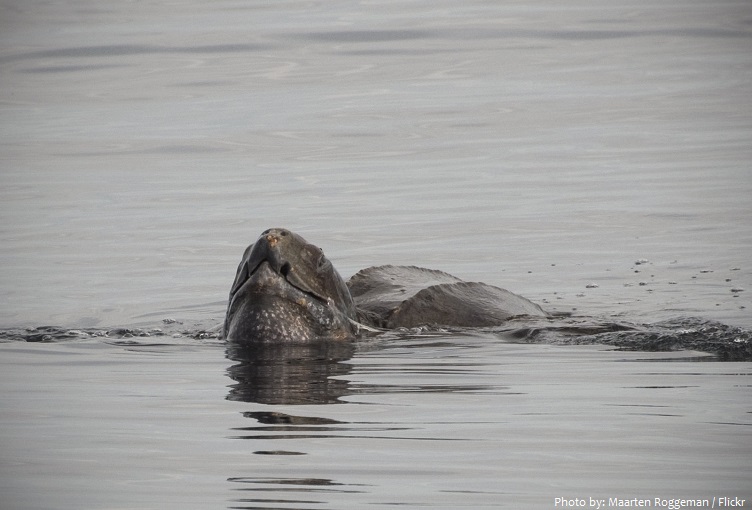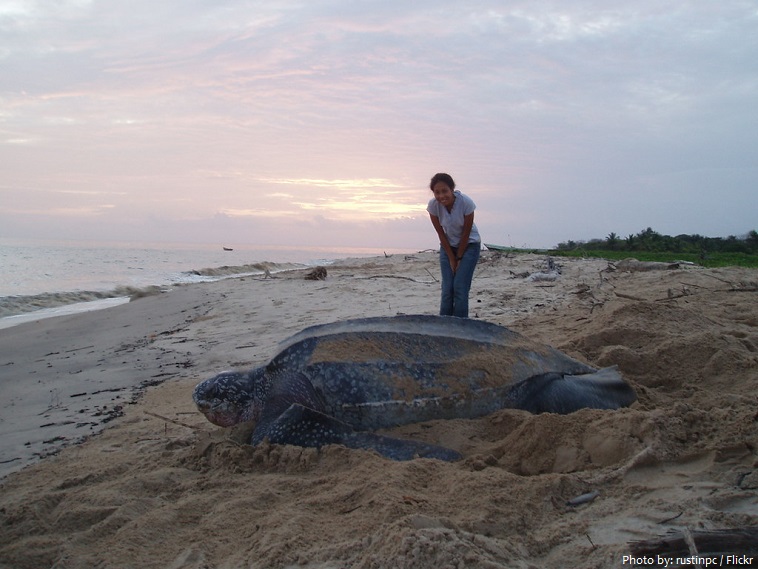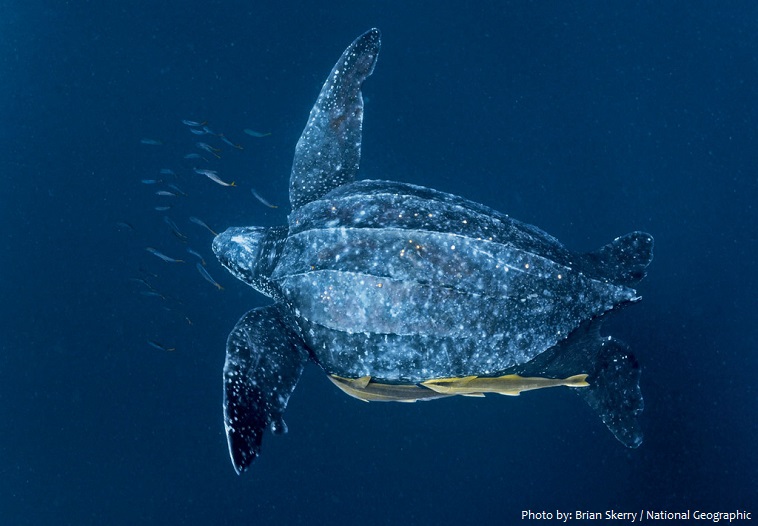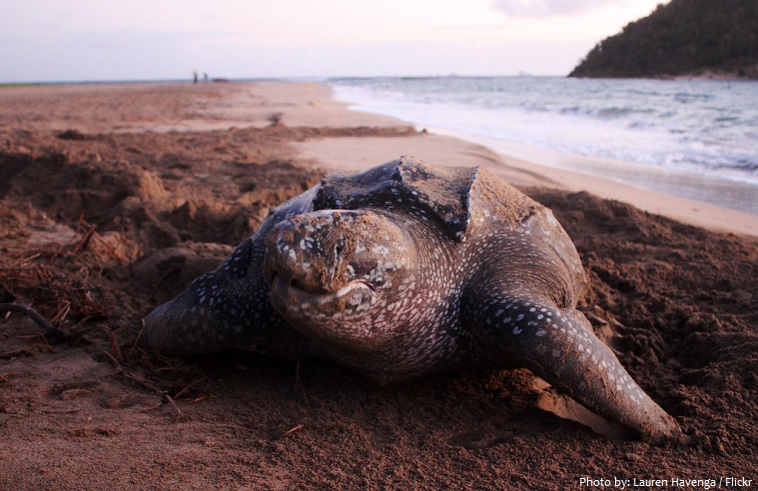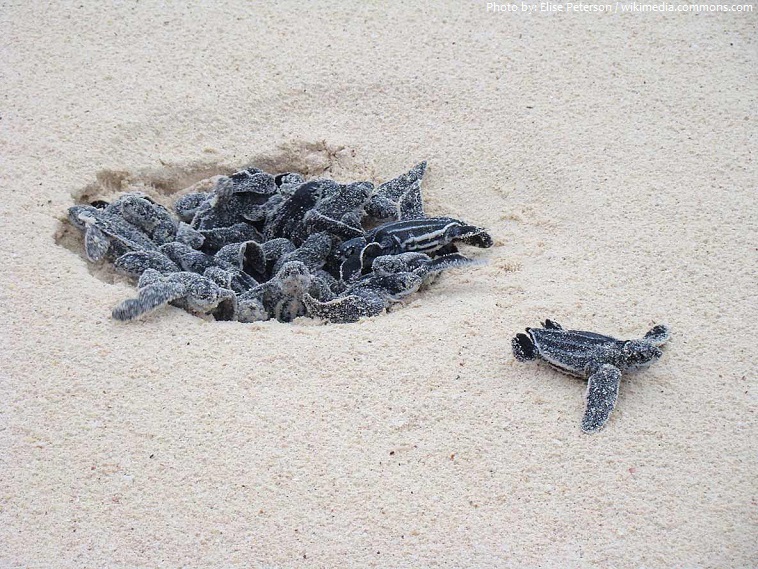The leatherback sea turtle is the largest of all living sea turtles.
It is the fourth largest modern reptile behind three crocodilians.
They are the only species of sea turtle that lack scales and a hard shell and are named for their tough rubbery skin.
Leatherbacks are found in tropical and temperate marine waters all over the world.
They can live as far north as Alaska and Norway and as far south as the Cape of Good Hope in Africa and the southernmost tip of New Zealand.
The leatherback is the most pelagic (open ocean dwelling) of the sea turtles.
Very little is known of the species’ lifespan. Some reports claim “30 years or more”, while others state “50 years or more”. Upper estimates exceed 100 years.
Adults average from 1 to 1.75 meters (3.3 to 5.7 feet) in shell length, 1.83 to 2.2 meters (6.0 to 7.2 feet) in total length and weigh 250 to 700 kilograms (550 to 1,540 lb).
The largest ever found was over 3 meters (9.8 ft) from head to tail and weighed 916 kilograms (2,019 lb). It was found on a beach on the west coast of Wales.
Leatherbacks are powerful swimmers, covering enormous distances in relatively short periods of time.
They are the fastest-moving reptiles. The 1992 edition of the Guinness Book of World Records lists the leatherback turtle moving at 35.28 kilometers per hour (21.92 mph) in the water. Usually, they swim at 0.5 to 2.8 meters per second (1.1 to 6.3 mph).
Leatherback turtles are one of the deepest diving marine animals. They have been recorded diving to depths as great as 1,280 meters (4,200 feet).
Typical dive durations are between 3 and 8 minutes, with dives of 30–70 minutes occurring infrequently.
Leatherback turtles are carnivores that feed in the open ocean. Their main prey are gelatinous invertebrates, mainly jellyfish and salps. They are known to eat other kinds of food though, including small crustaceans and fish (possibly symbiotes with jellies), cephalopods, sea urchins, and snails.
These sea turtles are solitary.
Leatherbacks are highly migratory, some swimming over 16,000 kilometers (10,000 miles) a year between nesting and foraging grounds.
Mating takes place at sea.
Adult females require sandy nesting beaches backed with vegetation and sloped sufficiently so the distance to dry sand is limited. Their preferred beaches have proximity to deep water and generally rough seas.
Females excavate a nest above the high-tide line with their flippers. Average clutch size is around 110 eggs, 85% of which are viable. After laying, the female carefully back-fills the nest, disguising it from predators with a scattering of sand.
Typically incubation takes from 55 to 75 days, and emergence of the hatchlings occurs at night. Hatchling turtles weigh 35 to 50 grams (1.2 to 1.8 ounces), and grow very fast. Leatherbacks may be the fastest growing reptile in the world, reaching adult size in 7 – 13 years.
Leatherback turtles face many predators in their early lives. Eggs may be preyed on by a diversity of coastal predators, including crabs, monitor lizards, raccoons, coatis, dogs, coyotes, genets, mongooses, and shorebirds ranging from small plovers to large gulls.
Despite their lack of a hard shell, the huge adults face fewer serious predators, though they are occasionally overwhelmed and preyed on by very large marine predators such as killer whales, great white sharks, and tiger sharks. Nesting females have been preyed upon by jaguars in the American tropics.
Globally, leatherback status according to IUCN is listed as Vulnerable, but many subpopulations (such as in the Pacific and Southwest Atlantic) are Critically Endangered.
